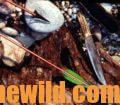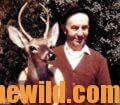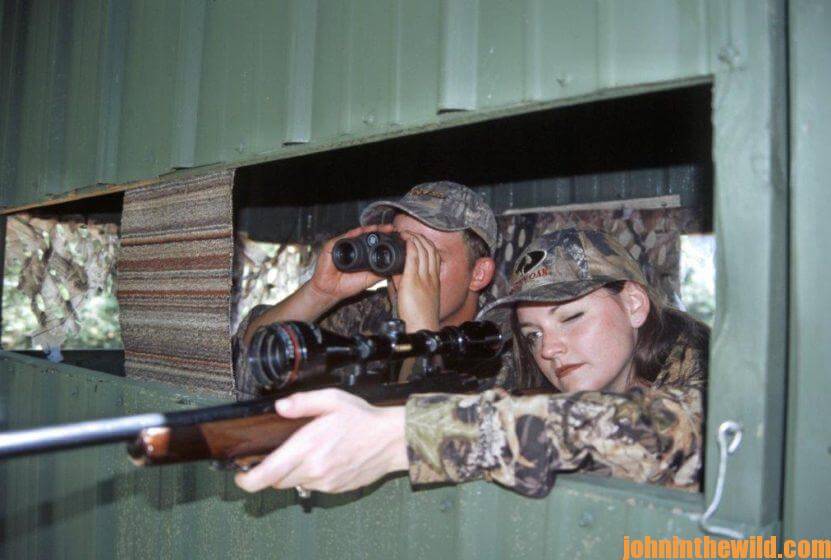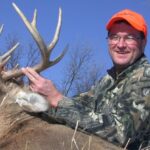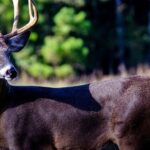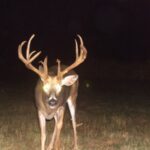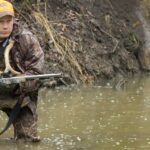Editor’s Note: To understand how baiting for deer with corn has become one of the most-effective wildlife management tools a deer hunter has today, we have to look at the history of how hunters once took deer and the changes that have occurred in deer management since then. I’ve been learning and studying deer hunters’ philosophies from the 1960s until today. In the past few years, I just have begun to realize why baiting with corn and using trail cameras are so effective at finding and taking older-age-class bucks, while the younger ones are growing to maturity. So, I’ll share with you too what my son and I have learned about managing a deer herd to only harvest older-age-class bucks during hunting season. I’ve never been a fan of baiting. Now having said that, I’ve hunted over corn feeders in Texas and bait piles in Canada. However, I’ve always felt like baiting was cheating when you’re trying to take deer. But I’ve learned differently.
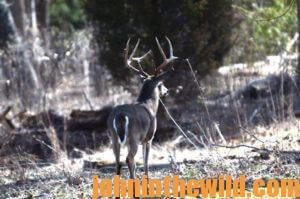 * Hunting Green Fields’ in Box Blinds and Tower Blinds:
* Hunting Green Fields’ in Box Blinds and Tower Blinds:
One of the problems that hunters have when hunting over green fields is that they’re easy places to observe and take does to keep the deer herd balanced on the lands they hunt. However, if you harvest does over green fields, you are not only educating the bucks to not come to the green fields during daylight hours, but you’re also educating the does to do the same.
Most hunters want to hunt in box blinds or tower blinds overlooking green fields or crop lands that have been planted for the deer because they’re out of the weather, the hunters can move more without being seen, and if the hunters fall asleep in their box blinds, nobody sees them. The worst thing that can happen is that they’ll wake up after falling out of their chairs. Most hunters want to hunt where they can see a lot of property. They believe that the more land they can see, the greater their odds are for seeing and taking older-age-class buck.
 However, in the places that most hunters don’t hunt is where they only may be able to see 10-35 yards of land. But bowhunters can hunt in close places like this. This is the reason that more and more bowhunters are taking more older-age-class bucks at the beginning of bow season. Don’t get me wrong, I’m totally in support of planting green fields to give deer more food than the land will produce if there aren’t any green fields. However, the best way to hunt green fields is to allow the green fields to become the deer’s sanctuary areas and to only hunt them during the rut.
However, in the places that most hunters don’t hunt is where they only may be able to see 10-35 yards of land. But bowhunters can hunt in close places like this. This is the reason that more and more bowhunters are taking more older-age-class bucks at the beginning of bow season. Don’t get me wrong, I’m totally in support of planting green fields to give deer more food than the land will produce if there aren’t any green fields. However, the best way to hunt green fields is to allow the green fields to become the deer’s sanctuary areas and to only hunt them during the rut.
“Wait a minute,” you may say. “We spend an awful lot of money and time planting these green fields, and we want to hunt them as much as we can.” But, the more you hunt the green fields, the less likely you are to take an older-age buck there.
* Taking Does:
Harvesting does was a hard pill to swallow back in the late 60s and 70s and even into the 80s in some parts of the country. The first doe harvest ever set-up by the State of Alabama took place at the first hunting club to which I ever belonged – the Tombigbee Club in Greene County. Although people weren’t excited to shoot does, sixty-eight hunters took 63 does on the first morning deer drive we had at our club where we were supposed to take does. At lunch, the president of our club announced, “I hope you boys are happy with what you’ve done. You’ve killed all the deer on this place that we’ve spent most of our lives trying to protect to have more bucks for you to hunt.”
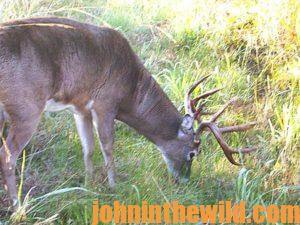 All of us who participated in that first doe harvest felt like children who just had been whipped, although the wildlife scientists had preached the gospel of harvesting does in overpopulated areas to increase the quality of deer and decrease the numbers of deer that were overpopulated for some time. For some reason, to a hunter, the wildlife scientist is like a preacher going to the red-light district in a metropolitan area and preaching the gospel – the sinners just don’t want to hear it. For this reason, change was a hard pill to swallow for the hunters who always had hunted a certain way. In the South, tradition often reigns supreme over a changing world.
All of us who participated in that first doe harvest felt like children who just had been whipped, although the wildlife scientists had preached the gospel of harvesting does in overpopulated areas to increase the quality of deer and decrease the numbers of deer that were overpopulated for some time. For some reason, to a hunter, the wildlife scientist is like a preacher going to the red-light district in a metropolitan area and preaching the gospel – the sinners just don’t want to hear it. For this reason, change was a hard pill to swallow for the hunters who always had hunted a certain way. In the South, tradition often reigns supreme over a changing world.
* Using Trail Cameras:
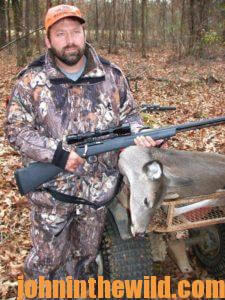 However, one of the biggest and best innovations in the outdoor world has been the modern-day trail cameras that take pictures automatically. In the hunting world, trail cameras have been a huge asset to the deer hunter to not only enable him to find and see the deer on the property he hunts, but to also learn where those deer hold during the day and at night. Cameras have allowed hunters to identify many older-age-class bucks that no one may have seen, if not for the trail cameras. Today, the newer trail cameras actually can send the pictures of the deer and turkeys they photograph to the hunter’s workplace or office. That way, we can learn more about where deer live and move, bed and feed, than most hunters ever will have learned after spending thousands of hours in the woods all year long trying to get that same information.
However, one of the biggest and best innovations in the outdoor world has been the modern-day trail cameras that take pictures automatically. In the hunting world, trail cameras have been a huge asset to the deer hunter to not only enable him to find and see the deer on the property he hunts, but to also learn where those deer hold during the day and at night. Cameras have allowed hunters to identify many older-age-class bucks that no one may have seen, if not for the trail cameras. Today, the newer trail cameras actually can send the pictures of the deer and turkeys they photograph to the hunter’s workplace or office. That way, we can learn more about where deer live and move, bed and feed, than most hunters ever will have learned after spending thousands of hours in the woods all year long trying to get that same information.
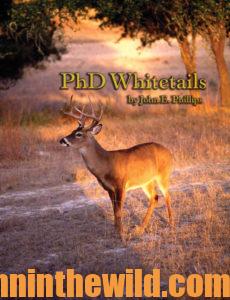 To learn more about hunting for deer, check out John E. Phillips’ deer-hunting book, “PhD Whitetails: How to Hunt and Take the Smartest Deer on Any Property,” available in Kindle and print and soon to be available in Audible at http://amzn.to/WIEUoo. You may have to copy and paste this link into your browser. (When you click on this book, notice on the left where Amazon says you can read 10% of the book for free).
To learn more about hunting for deer, check out John E. Phillips’ deer-hunting book, “PhD Whitetails: How to Hunt and Take the Smartest Deer on Any Property,” available in Kindle and print and soon to be available in Audible at http://amzn.to/WIEUoo. You may have to copy and paste this link into your browser. (When you click on this book, notice on the left where Amazon says you can read 10% of the book for free).
Tomorrow: Realize You Need to Teach Your Family How to Hunt Deer

